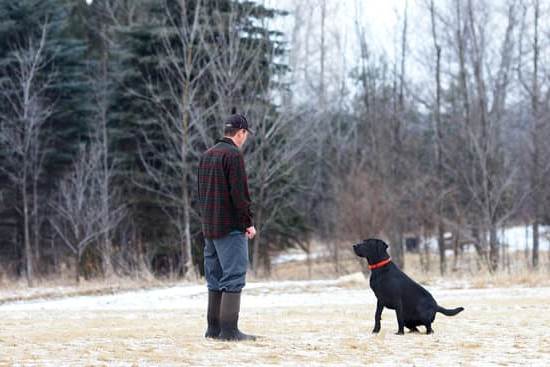Writing an excellent review of a dog trainer is not only beneficial for potential clients, but it also serves as valuable feedback for the trainer. In this article, we will explore the importance of writing a thorough review and how to effectively communicate your experience with a dog trainer. Whether you have had a positive or negative experience, your review can help others make informed decisions and also assist the trainer in improving their services.
When writing a review of a dog trainer, setting the right tone is essential. It is important to be honest and objective while sharing your experience. Potential clients rely on reviews to gauge the quality of service provided by the dog trainer, so your detailed and thoughtful feedback can significantly impact their decision-making process.
In the following sections, we will delve into the steps involved in writing a comprehensive review of a dog trainer. From researching the trainer and sharing personal experiences to highlighting their expertise and specific training techniques, this article will guide you through each aspect of crafting an excellent review that accurately reflects your interactions with the dog trainer.
Researching the Dog Trainer
When it comes to writing an excellent review of a dog trainer, one of the most important aspects is thoroughly researching the trainer and their methods. Gathering as much information as possible will not only provide context for your review but also give potential clients a better understanding of what to expect.
Gathering Information About the Dog Trainer
Start by gathering information about the dog trainer’s background, qualifications, and experience. This can be done by visiting their website, reading client testimonials, or even speaking with them directly. Understanding their approach to training and their overall philosophy will give you valuable insight to include in your review.
Understanding Their Training Methods and Experience
In addition to general information about the trainer, it’s important to delve into their specific training methods. Do they use positive reinforcement techniques, or do they have a more traditional approach? Understanding this aspect will help you provide a comprehensive assessment of the trainer’s expertise in your review.
By including detailed information about the dog trainer’s background, approach to training, and overall experience, your review will serve as a valuable resource for others who are considering enlisting their services. As you gather this information, you’ll be able to paint a vivid picture of what sets this particular trainer apart from others in the industry.
Personal Experience With the Dog Trainer
When writing an excellent review of a dog trainer, it is crucial to include your personal experience with the trainer. Your personal anecdotes and experiences can provide valuable insight for potential clients who are considering hiring the dog trainer. Here are some tips on how to effectively share your personal experience in your review:
- Share specific examples of interactions with the dog trainer, such as how they addressed a specific behavior issue or helped train your dog in a particular skill.
- Highlight the strengths of the dog trainer, such as their patience, communication style, or ability to tailor training methods to meet your dog’s needs.
- Be honest about areas for improvement, if any. This can help provide constructive feedback for the dog trainer and give potential clients a balanced perspective.
For example, you could talk about how the trainer’s positive reinforcement techniques helped improve your dog’s behavior or how their personalized approach made training sessions enjoyable for both you and your pet. By sharing specific stories and experiences, readers can gain a better understanding of what it would be like to work with the dog trainer.
In addition to sharing your personal experiences, it is also important to consider the impact that the trainer’s expertise has had on your dog’s behavior. This can further illustrate the effectiveness of the trainer’s methods and provide valuable information for those reading your review.
Highlighting the Trainer’s Expertise
When writing an excellent review of a dog trainer, it’s essential to highlight the trainer’s expertise in the field. By discussing their areas of expertise and how their training methods have benefited your dog(s), you can provide valuable information to potential clients.
Here are some tips on how to effectively highlight the trainer’s expertise in your review:
- Discuss specific training techniques used by the trainer: Mentioning specific training techniques used by the trainer and sharing your insights on their effectiveness can showcase the trainer’s knowledge and skills. For example, if the trainer specializes in positive reinforcement training, share specific examples of how this method has worked well for your dog.
- Highlight the trainer’s experience and qualifications: Researching the trainer’s background and qualifications can give you insight into their expertise. Mention any certifications, educational background, or years of experience in the industry to demonstrate their level of expertise.
- Share success stories: If your dog has shown improvement in behavior or learned new skills as a result of the trainer’s methods, be sure to include these success stories in your review. This can help potential clients understand the impact of the trainer’s expertise on dogs’ behaviors.
By effectively highlighting the trainer’s expertise in your review, you can provide valuable information to readers who are considering hiring a dog trainer for their furry companions. It also helps recognize and appreciate the hard work and dedication of skilled trainers within the industry.
Communicating Effectively
Effective communication is key when it comes to writing an excellent review of a dog trainer. It’s important to clearly and articulately express your feedback in order to provide valuable information for others who may be considering the trainer’s services.
One way to effectively communicate your experience is by using specific examples to support your review. For instance, instead of simply stating that the trainer was knowledgeable, you could give an example of a specific training technique they used and how it benefited your dog.
When sharing feedback about a dog trainer, it’s crucial to be as detailed and specific as possible. This includes discussing not only the positive aspects of the trainer’s methods but also any areas for improvement. Constructive criticism can be very helpful for both the trainer and potential clients. By highlighting both strengths and areas for improvement, you can provide a well-rounded and balanced review that offers valuable insights for readers.
Another aspect of effective communication in writing a review of a dog trainer is providing clear and concise information about your personal experience with the trainer. Share anecdotes and experiences that demonstrate how the trainer’s methods have impacted your dog’s behavior.
This could include before-and-after scenarios or specific instances where the trainer’s expertise made a noticeable difference in your dog’s behavior. By effectively communicating these experiences, you can give readers a clear understanding of the impact the trainer had on your pet.
Addressing Specific Training Techniques
When writing a review of a dog trainer, it is important to address the specific training techniques used by the trainer. This section of your review allows you to share your insights on their effectiveness and provide potential clients with a better understanding of what to expect from the training sessions.
Discussing Specific Training Techniques
Begin this section by discussing some of the specific training techniques that the dog trainer uses. Include details about how these techniques are implemented, and how they differ from other training methods. Providing specific examples will help readers visualize what the training sessions may entail and determine if it aligns with their own training goals for their dog.
Sharing Your Insights
After detailing the specific training techniques, share your own insights based on your experience with the trainer. Describe how these techniques have impacted your dog’s behavior and any noticeable improvements you have observed as a result of the training. Be honest about the effectiveness of each technique and provide examples to support your assessment.
Evaluating Effectiveness
Finally, offer an evaluation of the overall effectiveness of these techniques. Discuss whether they met your expectations, exceeded them, or fell short in certain areas.
This information will be valuable for potential clients who are considering enrolling their dogs in training sessions with this particular trainer. By addressing specific training techniques in your review, you are providing a comprehensive analysis that can greatly assist others in making an informed decision about whether this dog trainer is the right fit for their needs.
Impact on Your Dog’s Behavior
When writing a review of a dog trainer, it is crucial to include the impact that their methods have had on your dog’s behavior. This section provides valuable information for potential clients and helps them understand the tangible results of working with the trainer. Here’s how to effectively communicate the impact on your dog’s behavior in your review.
Begin by sharing specific examples of your dog’s behavior before and after working with the trainer. Discuss any problem behaviors that were addressed during training, such as excessive barking, jumping, or leash pulling. Describe how the trainer’s methods have contributed to improving these behaviors and any positive changes you’ve noticed in your dog.
It’s important to be honest about the progress made by your dog. If there are still areas where you see room for improvement, you can mention these as well. This gives a balanced view of the trainer’s impact on your dog’s behavior and shows that you are providing an objective review.
Ultimately, this section should highlight the positive changes in your dog’s behavior as a result of the trainer’s expertise and methods. By sharing specific examples and personal experiences, potential clients can gain insight into how the trainer may be able to help their own dogs. This information is invaluable for readers who are considering enlisting the services of a dog trainer.
| Aspect | Description |
|---|---|
| Specific Examples | Details about specific before-and-after scenarios related to your dog’s behavior. |
| Honesty in Progress | Mentioning areas where improvement is still needed while highlighting positive changes. |
| Impact on Reader | Explaining how this information can help potential clients make informed decisions about hiring a dog trainer. |
Concluding the Review
After thoroughly researching the dog trainer, sharing personal experiences, and highlighting their expertise, it is crucial to effectively conclude your review. The conclusion is where you summarize your overall experience with the dog trainer and encourage others to consider their services. When writing a review of a dog trainer, it’s important to provide a well-rounded assessment that can help other pet owners make an informed decision.
One way to conclude your review is by summarizing the positive impact the dog trainer has had on your pet’s behavior. Share specific before-and-after scenarios to illustrate how the trainer’s methods have benefited your dog. This will provide readers with tangible examples of the trainer’s effectiveness and give them confidence in considering their services.
Additionally, it’s essential to highlight any areas for improvement in a constructive and respectful manner. This shows that your review is fair and balanced, providing valuable feedback for both the dog trainer and potential clients. Concluding with a note of encouragement for others to consider the dog trainer’s services can leave a positive impression on readers who are looking for guidance on choosing a reputable professional.
Finally, don’t forget to include contact information for the dog trainer at the end of your review. This allows interested readers to easily reach out for more information or to book a session based on your positive recommendation.
| Benefits of Conclusion | How to Provide Contact Information |
|---|---|
| Summarizes overall experience | Share details at end of review |
| Encourages others to consider services | Include phone number and email if available |
Providing Contact Information
In conclusion, writing a thorough and comprehensive review of a dog trainer is essential in helping other pet owners make informed decisions. By following the outlined steps for researching the dog trainer, sharing personal experiences, highlighting the trainer’s expertise, communicating effectively, addressing specific training techniques, and discussing the impact on your dog’s behavior, you can create a well-rounded review that will be valuable to others seeking professional help for their pets.
When providing a concluding section for your review, it is important to summarize your overall experience with the dog trainer. You can reiterate how their expertise has positively impacted your dog’s behavior and share any before-and-after scenarios to demonstrate the effectiveness of their methods. In addition, encourage others to consider the services of the dog trainer based on your positive experience.
Furthermore, it is crucial to provide contact information for the dog trainer at the end of your review. By sharing their contact details and encouraging readers to reach out for more information or to book a session, you are making it easier for potential clients to connect with the trainer.
This will not only benefit the trainer but also help other pet owners find reliable and effective professional assistance for their beloved furry companions. Overall, by following these steps and including all relevant information in your review, you can help others make informed decisions when choosing a dog trainer.
Frequently Asked Questions
How Do You Say Thank You to a Dog Trainer?
Saying thank you to a dog trainer can be done in various ways, depending on your relationship with them. A simple verbal “thank you” or a heartfelt note expressing your gratitude for their hard work and dedication is always appreciated. Remember, a little gratitude goes a long way.
How Do You Describe a Well Trained Dog?
A well-trained dog is one that responds obediently to commands, demonstrates good behavior both at home and in public, and has good social skills with other animals and people. They exhibit self-control, patience, and are a joy to be around.
How Would You Describe a Dog Trainer?
A dog trainer is someone who possesses a deep understanding of canine behavior, training methods, and animal psychology. They are patient, observant, empathetic, and skilled at communicating with both dogs and their human owners. A good dog trainer is dedicated to ensuring the well-being of the dogs they work with.

Welcome to the blog! I am a professional dog trainer and have been working with dogs for many years. In this blog, I will be discussing various topics related to dog training, including tips, tricks, and advice. I hope you find this information helpful and informative. Thanks for reading!





